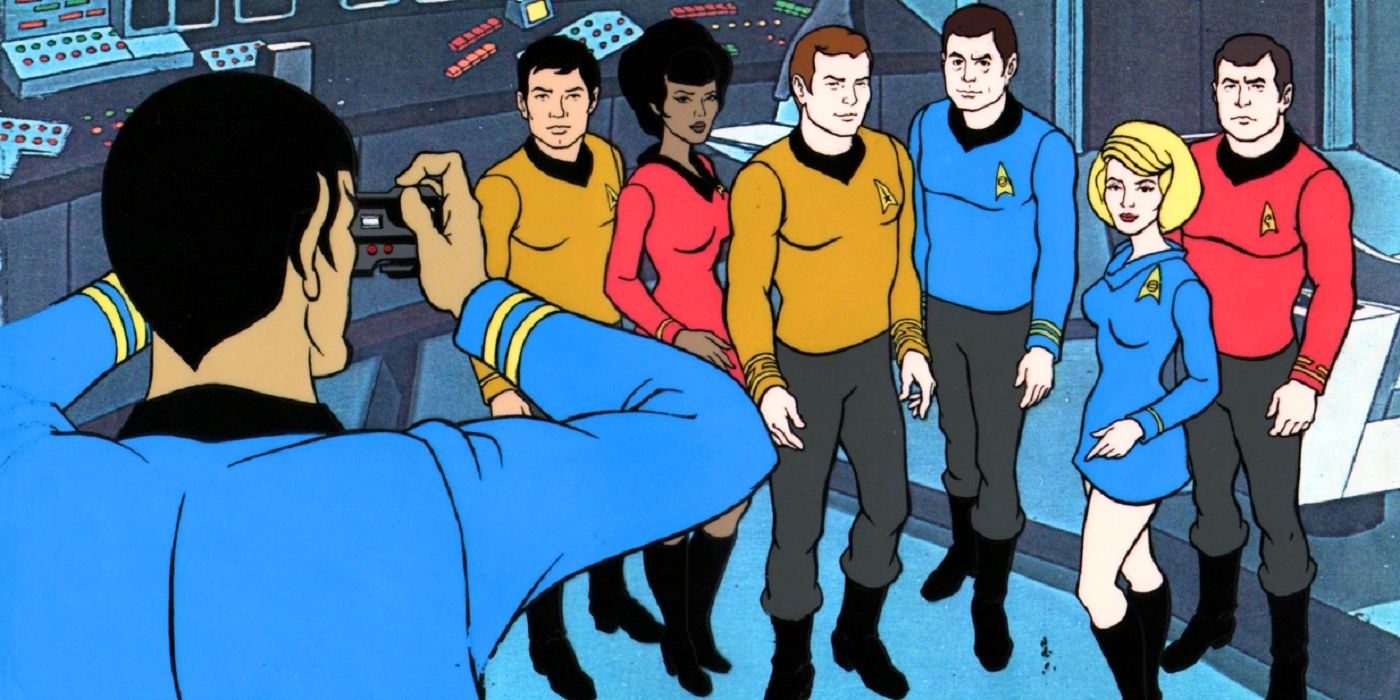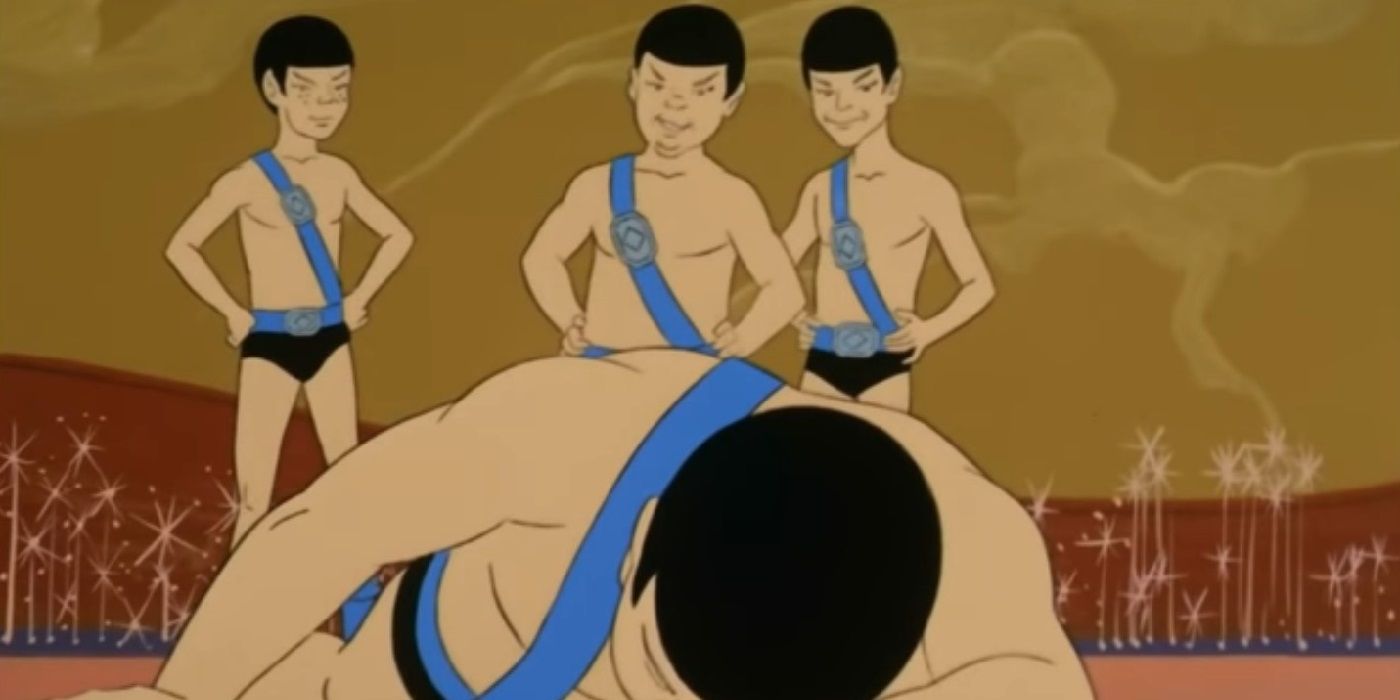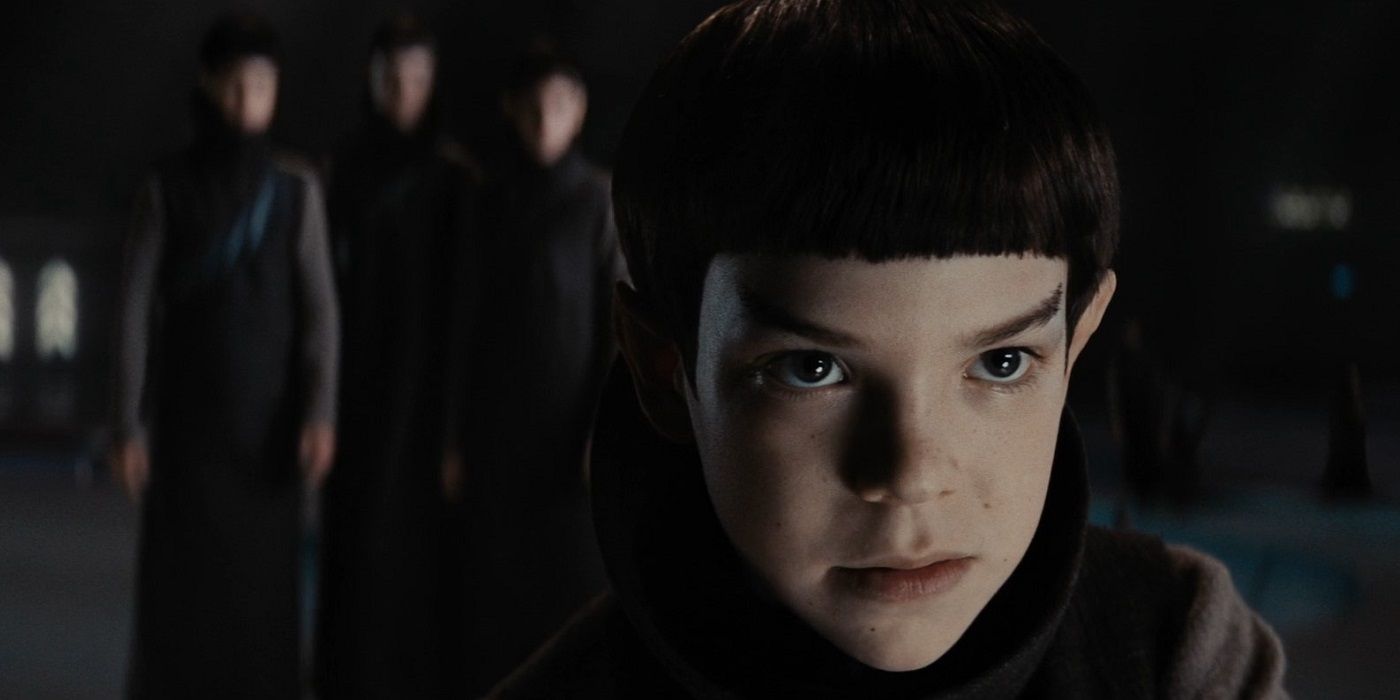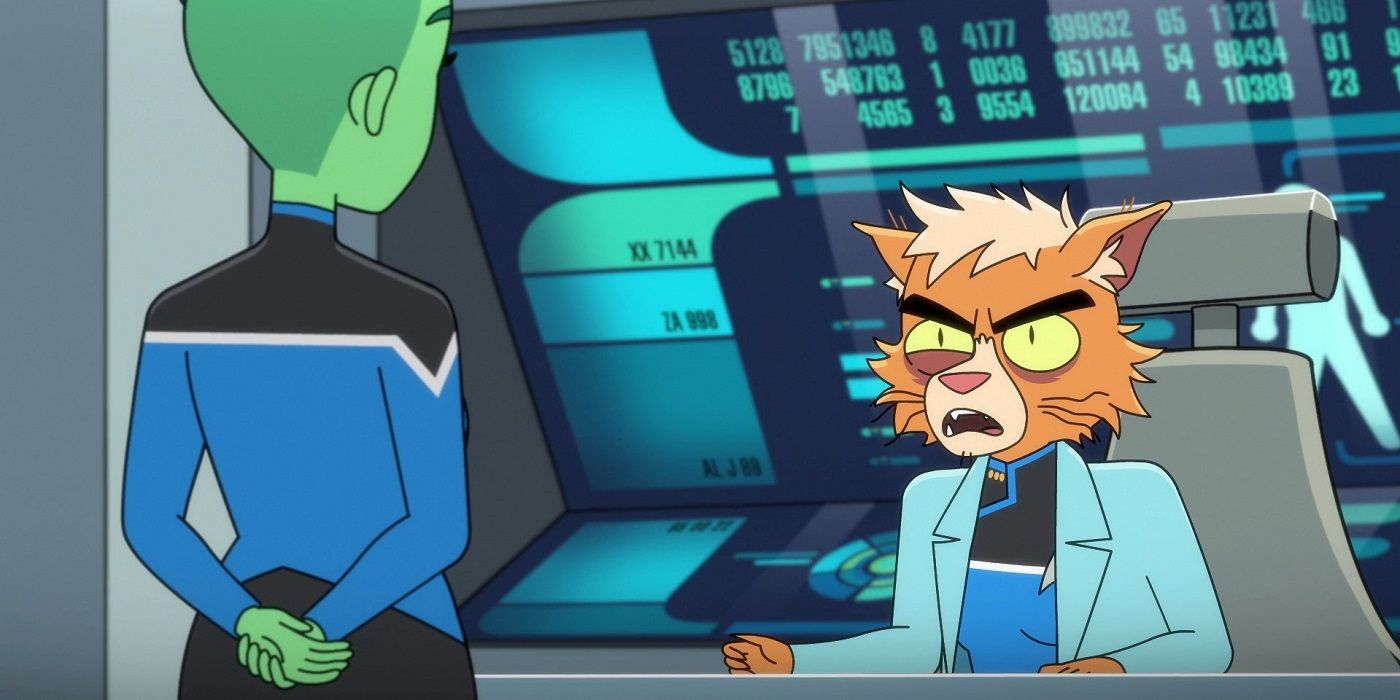Star Trek: The Animated Series is something of a red-headed step-child for the vaunted sci-fi franchise. Conceived as a kid-friendly continuation of The Original Series‘ five-year mission, it was abandoned by Star Trek creator Gene Roddenberry and virtually ignored for many years. It has since been restored and is now widely available, but it’s left a number of questions in its wake.
The biggest is whether or not Star Trek: The Animated Series is canon. The short answer is “yes,” though it took a convoluted path there, and its status remained open on the canon front for many years. Furthermore, its cheap animation and weird storylines don’t always fit into popular conceptions about the franchise. Reconciling them with the rest of Star Trek requires a little work. That said, the creative DNA and other factors are too close to The Original Series to ignore.
Star Trek: The Animated Series Reunited the TOS Team
The Animated Series was being discussed even before The Original Series was canceled, though behind-the-scenes negotiations took some time. But it assembled an impressive team when it finally premiered in September 1973. Roddenberry retained creative control, and the new cartoon featured prominent Original Series writers like D.C. Fontana, David Gerrold, and Margaret Armen. In addition, science fiction writer Larry Niven adapted one of his short stories into Season 1, Episode 14, “The Slaver Weapon.” Most of the original cast returned to provide the voices of their characters, with Leonard Nimoy famously refusing to sign on without costars Nichelle Nichols and George Takei.
The big problems came with its animation production values. Filmation, the studio which produced The Animated Series, was notorious for its bargain basement techniques and copious corner-cutting. For instance, the characters were often rendered motionless save for their mouths, and the show shamelessly reused the same shots in episode after episode. In addition, the show was squarely aimed at kids, which led to wild concepts such as the giant Spock clone in Season 1, Episode 7, “The Infinite Vulcan.” That made for an awkward fit with the show’s budget and left The Animated Series one of the flat-out weirdest series in the franchise.
Gene Roddenberry Tried to Bury The Animated Series
Roddenberry was always disappointed in the results of The Animated Series and infamously didn’t believe in canon. This led to subsequent continuity problems, especially in ancillary products such as novels. And he dropped the axe on The Animated Series after the first season of Star Trek: The Next Generation, when the franchise license was renegotiated. From that point, the cartoon was essentially exiled. VHS and Laserdisc copies were released, but they were considered outside of the franchise’s continuity.
The point was driven home in 1999 when Michael and Denise Okuda — famously tasked with “straightening out” Star Trek canon — cited Paramount policy in the opening to their reference book The Star Trek Encyclopedia: A Reference Guide to the Future. It specifically states that The Animated Series isn’t included in the reference and that Paramount policy makes them unofficial. Considering the Okudas’ status as unofficial keepers of Star Trek canon, it’s subsequently led to a lot of confusion.
Star Trek Just Couldn’t Say No to The Animated Series
Despite that, subsequent Star Trek series often referred to episodes or incidents from The Animated Series. Season 1, Episode 2, “Yesteryear,” is a particularly popular source. Written by Fontana, it recounts the details of Mr. Spock’s troubled youth on Vulcan, including being bullied for his human heritage and the loss of a beloved pet. Several episodes of Star Trek: Enterprise and Star Trek: Deep Space Nine both make reference to Vulcan geographic locations in “Yesteryear.”
Similarly, The Animated Series introduced a cat-like Caitian, Lt. M’Ress, and a three-armed Edosian named Arex to the crew. Caitians subsequently appeared in Star Trek IV: The Voyage Home, while Enterprise Season 4, Episode 22, “These Are the Voyages…,” makes reference to Edosian ecology. Even James Kirk’s middle name — Tiberius — was first given in The Animated Series Season 2, Episode 2, “Bem,” before being used in Star Trek VI: The Undiscovered Country. The rest of the franchise clearly had no issues referencing it.
Roddenberry passed away in 1991, and subsequent creators clearly viewed The Animated Series with far more fondness. “Yesteryear,” in particular, becomes hard to deny as canon, especially considering the pedigree of its writer. While Star Trek‘s founding father didn’t care for it, his opinions on the matter rapidly diminished in importance. And though there was never any official announcement, information from The Animated Series was added to Star Trek‘s website in 2007. Fans consider the move an acknowledgment of its canon status.
Latter-Day Star Trek Shows Refer to TAS as Canon
More recent Star Trek endeavors haven’t been shy about openly citing plot points from The Animated Series. 2009’s Star Trek movie, for instance, included a scene of Spock being tormented by his peers as a child. It goes deeper than just reference points. The Animated Series Season 1, Episode 9, “Once Upon a Planet,” referred to Spock’s mother Amanda reading Alice in Wonderland to him as a child. Star Trek: Discovery used Alice as an active dramatic trope in Season 1, Episode 3, “Context Is for Kings.” In the process, it revealed that Amanda read Alice to Michael Burnham as a child, too, and that Burnham still had a copy of the book among her possessions.
Star Trek: Lower Decks has made a particular point of embracing The Animated Series, especially the silly or outlandish parts. Not only are the two both Star Trek cartoons (the only two until Star Trek: Prodigy premiered in late 2021), but Lower Decks exists to champion the forgotten corners of the franchise to which its predecessor was consigned. And with better animation — as well as considerably more self-awareness — it developed a number of Animated Series concepts in novel and creative ways. Multiple Edosian characters have appeared in the series, for instance, while Caitians finally received their due with the show’s scene-stealing Dr. T’Ana. Other open nods include the Spock clone’s giant skeleton, which appeared in Lower Decks Season 2, Episode 2, “Kayshon, His Eyes Open,” and the animated versions of Kirk and Spock showing up on a datapad in Season 1, Episode 10, “No Small Parts.”
And unlike The Animated Series, Lower Decks is confirmed canon, which makes the references canon as well. When combined with all the other nods the franchise has made to The Animated Series, simply ignoring it makes no sense. Roddenberry’s wishes held sway for many years, and Star Trek was his brainchild. But with him and the rest of the creative team behind The Animated Series, he couldn’t simply “uncanon” it just because he didn’t think the quality was up to snuff. Not only was it better than he gave it credit for, but it contained details and information that are now inextricably woven into the franchise. Despite his efforts, The Animated Series is canon, and frankly, Star Trek is all the better for it.





